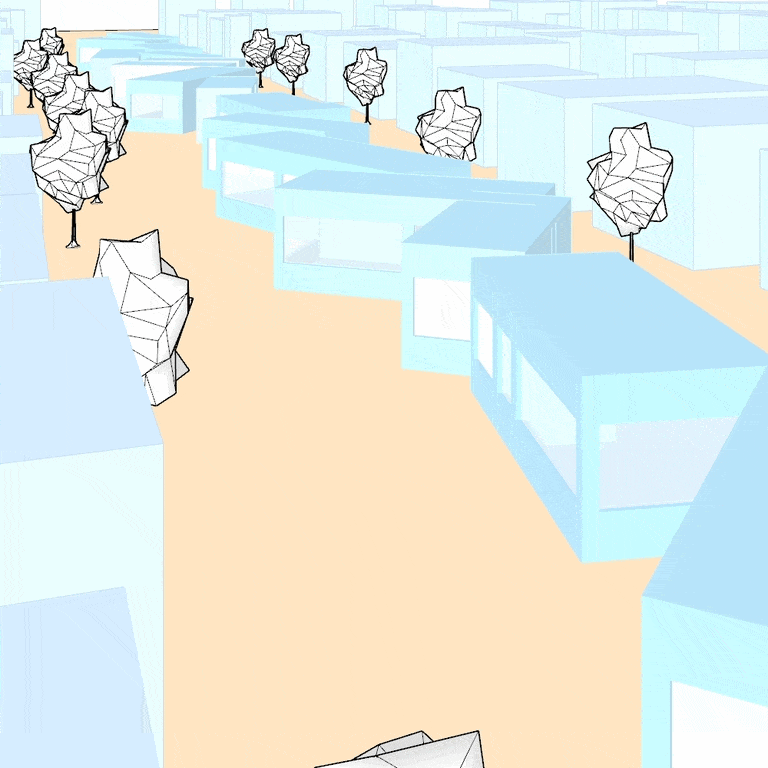In this project, computational and generative design methodologies are employed to effectively address design challenges. The use of generative natural language AI aids designers by offering easily accessible technical expertise, while AI imaging facilitates swift visualization of various generative design options.
By 2050, a 1.5°C rise in global temperature since the beginning of the century is expected to cause a mass displacement of people. Climate refugees will flock to cities that still offer a suitable living environment in higher latitude regions. To accommodate the increased population density in cities, new dwelling units will be necessary. Shared self-driving vehicles improve transportation efficiency and, therefore, reduce the need for wide roads. Streets, owned by the government, will be rezoned to accommodate additional units taking form in off-site manufactured modular homes and temporary mobile units, which, as a result, will turn low density residential neighborhoods into denser and pedestrian-centric communities.







